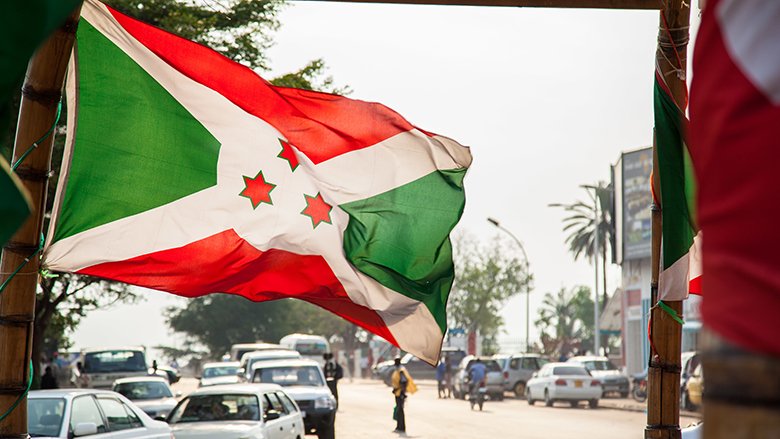The international isolation in 2015-2020 led Burundi to rely massively on its domestic market to meet its financing needs. In addition, the overlapping crisis of the COVID-19 health pandemic and the Russia’s invasion of Ukraine had further weakened the country’s economic situation. Over the last eight years, domestic borrowing grew, on average, by 20.5 percent. At the end of June 2022, nominal public debt stood at US$1.9 billion (or 54.6 percent of the Gross Domestic Product), of which domestic debt represented 77 percent of total debt. The latest joint IMF-WB LIC-DSA (2022) assessed Burundi as at high risk of external and public debt distress. However, the government has made efforts to ensure that the debt risk rating does not deteriorate further.
Burundi has reached a staff-level agreement with IMF on economic policies and reforms to be supported by a new 40-month Extended Credit Facility. The reform program aims to support the economic recovery from shocks, restore external sustainability, and strengthen debt sustainability while creating fiscal space for accelerated and inclusive growth. With the premise of an agreement with the IMF and a re-engagement of the international community, Burundi is expected to have access to more external borrowing sources and use various borrowing instruments. Burundi is therefore facing new challenges to develop a new debt management strategy and improve the country’s debt management capacity and practices.
It is within this context that the Ministry of Finance, Budget, and Economic Planning (MFBEP) requested the assistance of the World Bank to bring Burundi’s debt management framework and practice up to par with international standards and strengthen the country’s capacity in debt management. Supporting activities undertaken in response to this request are financed under the Debt Management Facility (DMF).
In response to the authorities’ requests, the World Bank, jointly with the Government and partners including the IMF, has engaged in fast-paced support in a programmatic approach that allows for: (i) carrying out diagnostic work to identify areas of improvement in debt reporting and debt management; (ii) setting up a debt management reform plan while (iii) providing capacity building to ensure adequate implementation of planned reforms and improve debt management practices.
The Technical Assistance plan includes support to improve debt transparency and debt reporting standard and practices and enhance the capacity of the Public Debt Department (DDP) of the MFBEP in the elaboration of a Medium-Term Debt Strategy (MTDS) and an Annual Borrowing Plan (ABP). Accordingly, a virtual World Bank mission took place on March 1-9, 2023, on Debt Reporting and Monitoring, followed by a joint
World Bank/IMF Technical Assistance mission on MTDS that visited Burundi on April 17- 21, 2023. In addition, a Debt Management Assessment Performance mission from the World Bank will take place in June 2023 to determine the strengths and weaknesses of debt management, with the intent of following up with a Reform Plan mission to address key identified weaknesses.
Improving debt management in Burundi will require continued support and technical assistance from the country’s development partners to build capacity and strengthen institutions. In the government program, the intermediate results in the medium terms, among others, would include the submission of an MTDS and ABP to Parliament in June 2024; improvements in the debt transparency heat map in October 2023; improvements in governance and legal framework for borrowing policies, and debt reporting conforming international standards in the next two years.

